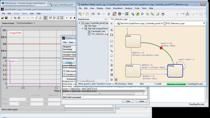Requirements Based Testing Workflow Example
This example shows you how to get started with requirements-based testing using Simulink verification and validation tools. It walks you through how to link test cases to requirements, run test suites, and analyze missing model test coverage. The example uses Requirements Toolbox, Simulink Test, Simulink Coverage, and Simulink Design Verifier.
Published: 18 Jan 2024





